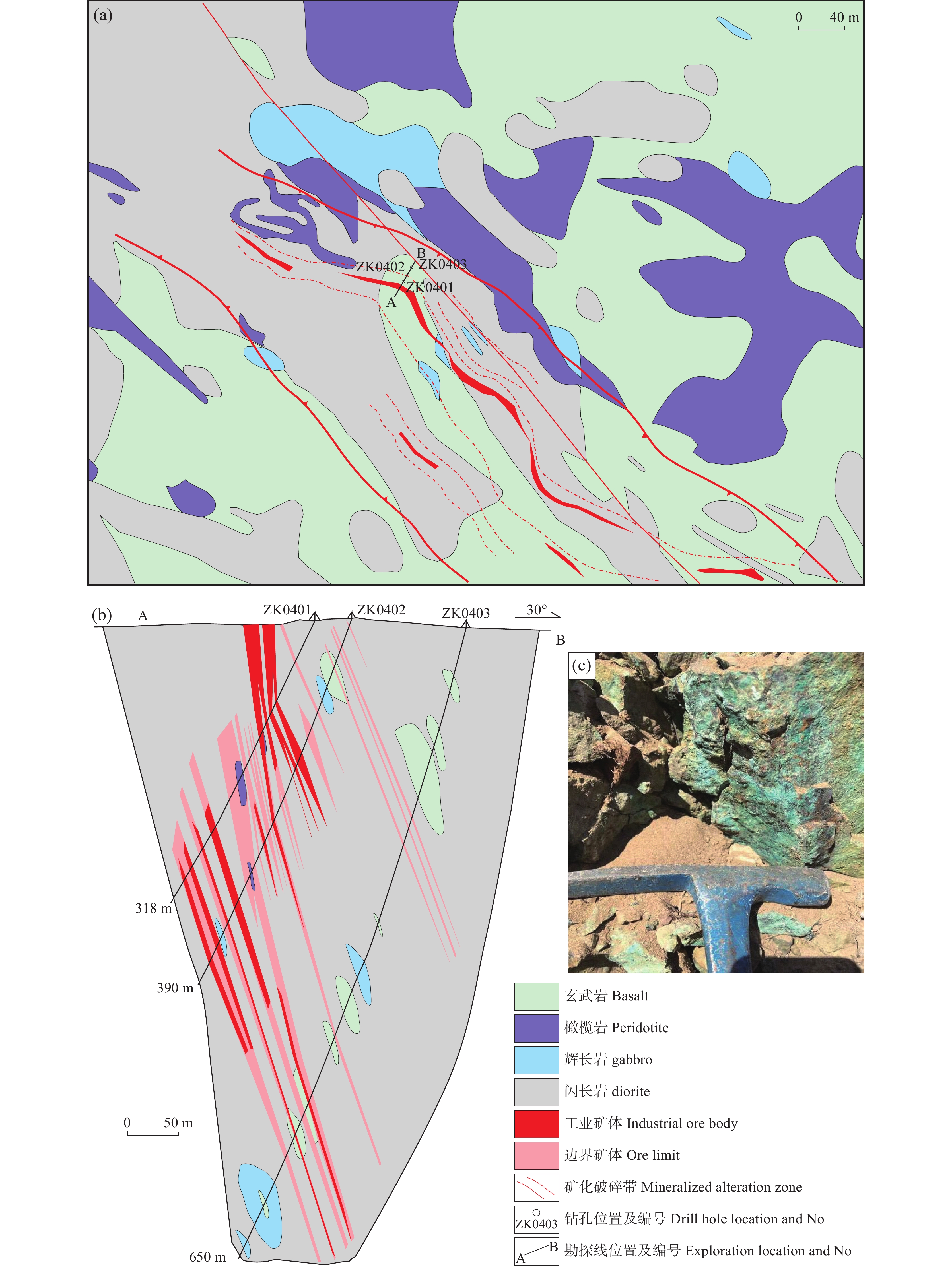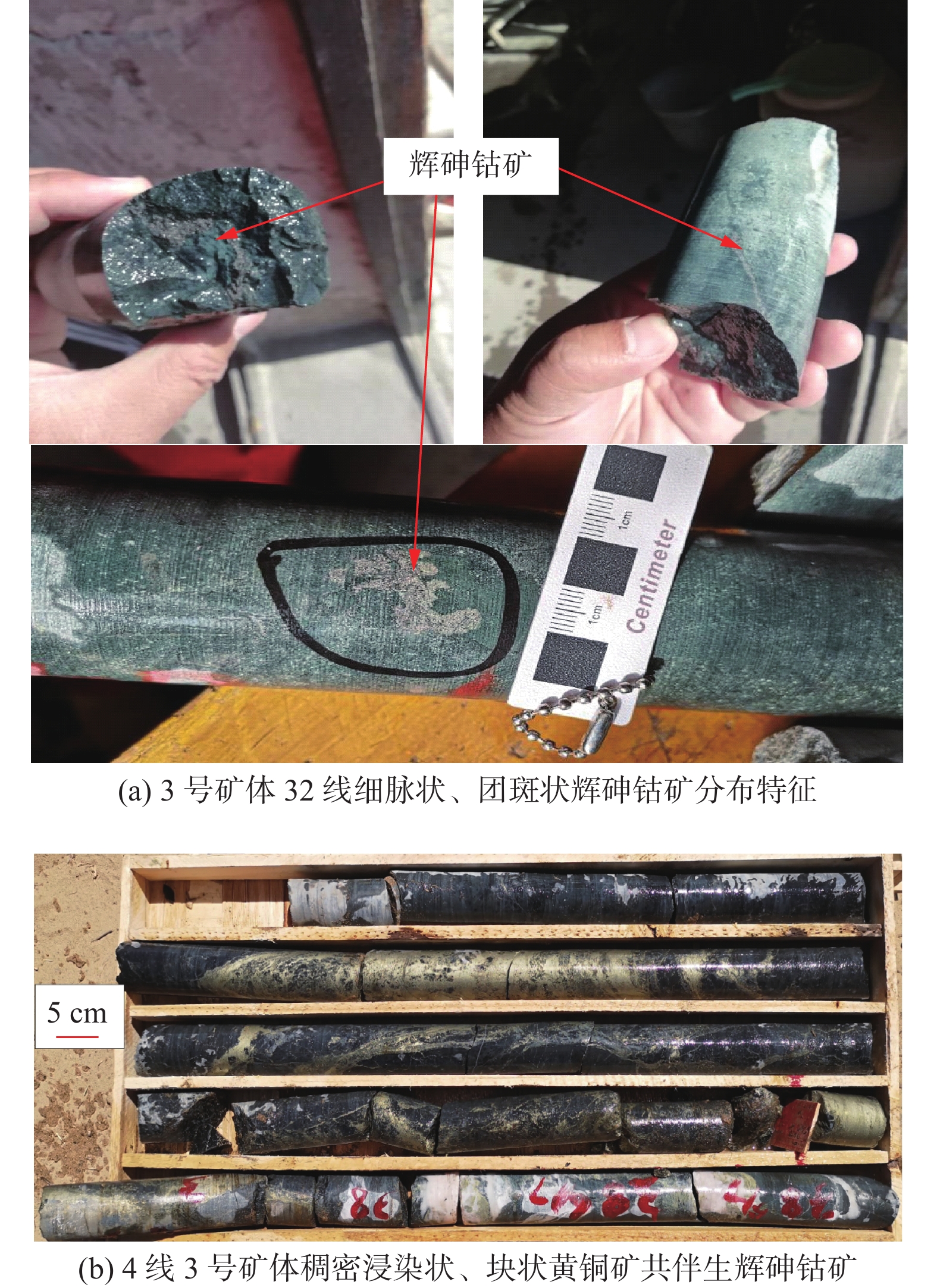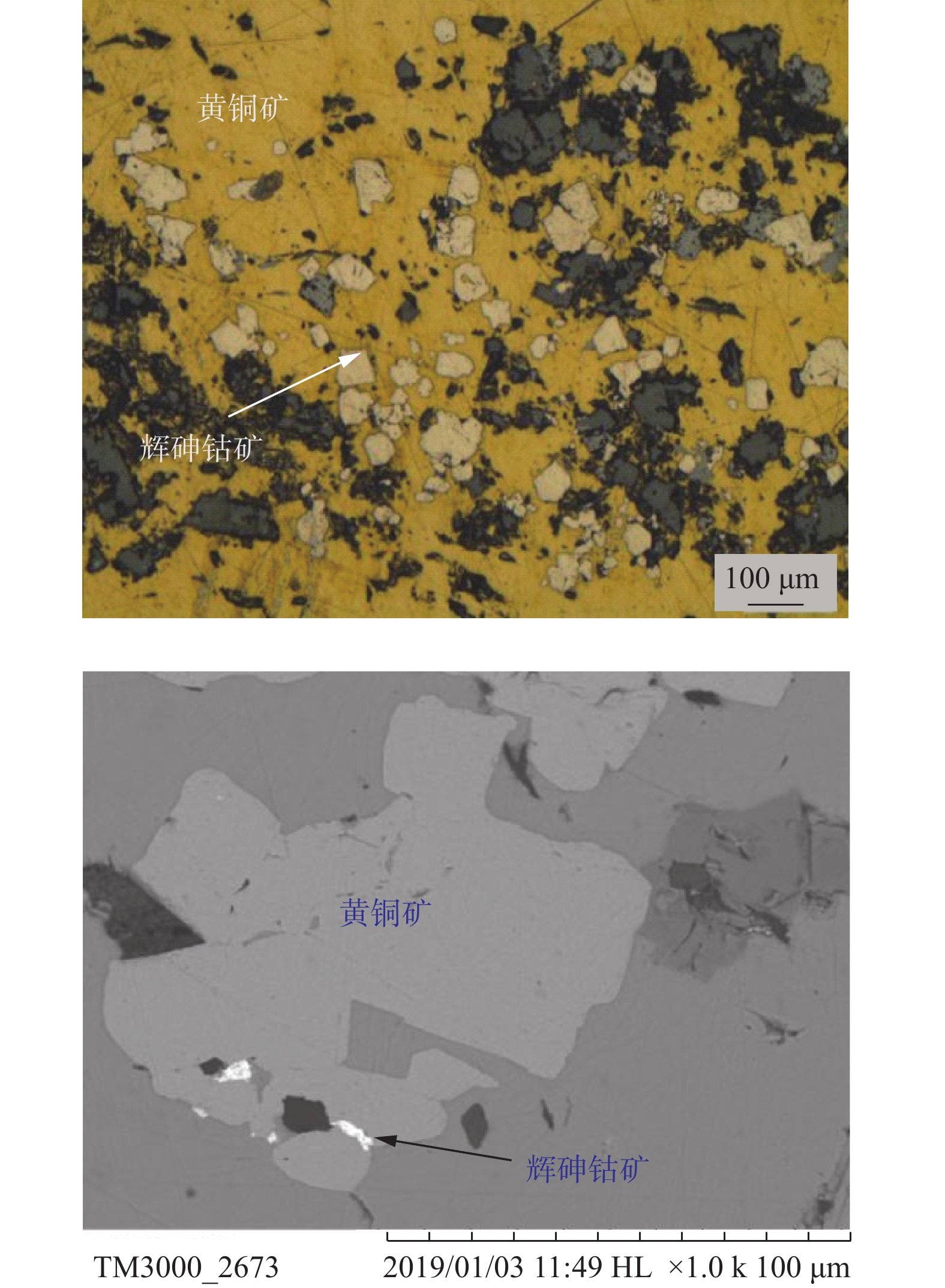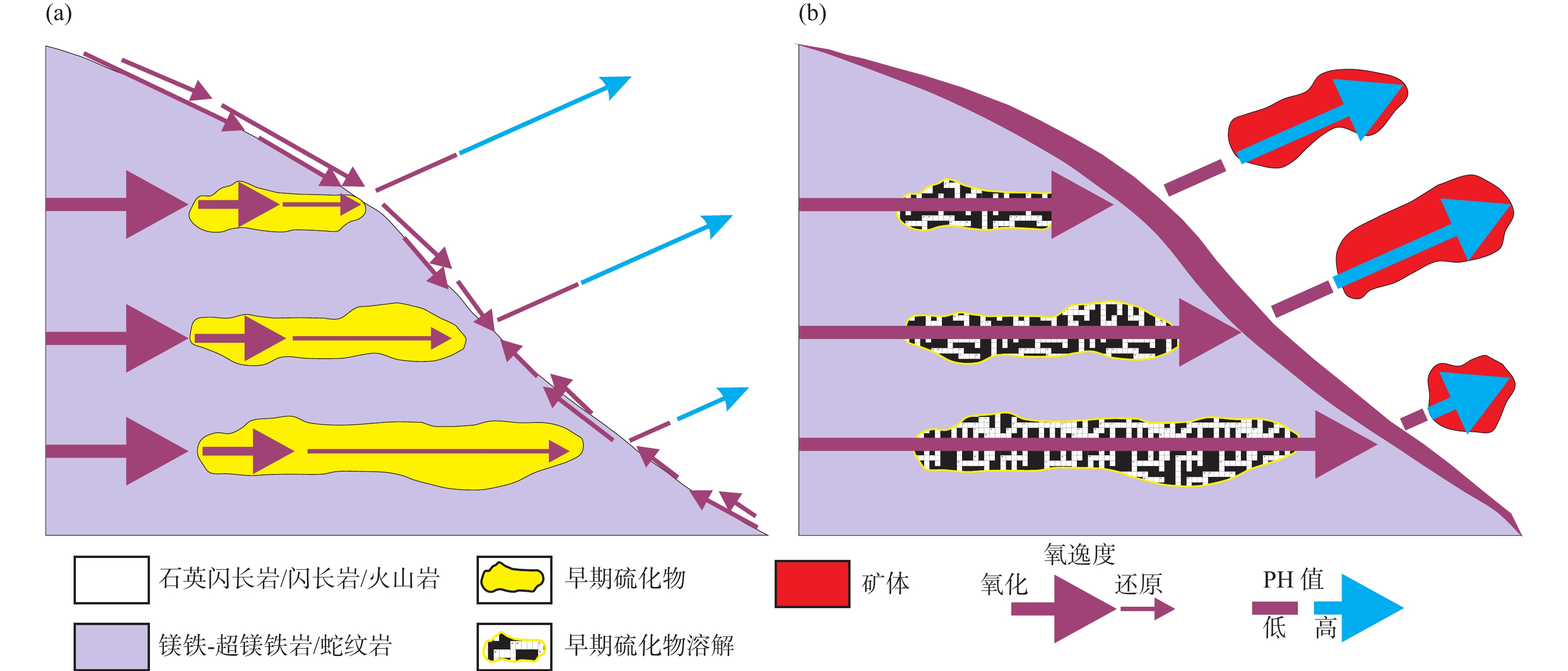Metallogenic Characteristics of Yundukala Co Deposit in Northern Margin of Junggar Metallogenic Belt, Northwest China
-
摘要:
钴是全球战略性关键矿产,对国民经济、国家安全和新兴产业发展具有关键作用。钴资源的国内供应基本来源于岩浆铜镍硫化物矿床冶炼铜镍的副产品,尚未发现独立钴矿床。准噶尔北缘成矿带蕴都卡拉钴矿,是除岩浆硫化物矿床类型之外的新发现。笔者通过蕴都卡拉钴矿成矿特征研究,初步认为钴矿聚集于闪长岩与玄武岩接触带的构造破碎带内,沿北西向断裂两侧分布,表现了钴、铜、金的典型组合,属于岩浆热液型矿床。在蕴都卡拉外围沿北西向断裂两侧发育多处闪长岩与玄武岩的接触部位,钴矿成矿条件优越,表现出较大的钴矿找矿潜力。笔者通过蕴都卡拉钴矿富集规律和成矿特征研究,旨在揭示钴矿产资源成矿潜力和找矿新靶区,支撑服务战略性矿产找矿行动,缓解中国钴矿产资源安全供应压力,降低安全风险。
Abstract:Cobalt is global strategic critical minerals, which is of great strategic significance to the national economy, national security, and technological development. Therefore, it is urgent to strengthen the study of cobalt mineralization regularity, to develop efficient exploration technology, and to search the new continuous resources. The cobalt resources stemed mainly from by-product smelt Cu and Ni from magmatic sulfide deposits in China, independent cobalt deposit not found. The Yundukala cobalt deposit from northern margin of Junggar metallogenic belt is newly discovered in China. The paper preliminary think that cobalt accumulation on the contact zone between diorite and basalt, at the same time, structural broken belt, the distribution of cobalt minerlization is made along both sides of the NW–SE fracture, it shows a typical combination of cabalt, copper and gold, and belongs to magmatic hydrothermal type deposit. Moreover, there developing many contact parts diorite and basalt along both sides of NW-SE fracture in Yundukala peripheral area, they have advantageous metallogenic conditions of cobalt deposits, and showing great prospecting potential. The paper intends to research metallogenic regularity and mineralization characteristics by Yundukala cobalt. This work could reveal the metallogenic potential of cobalt mineral resources, determine new prospecting targets, support the strategic mineral prospecting operations, and enhance the ability to ensure the safe supply of cobalt mineral resources in China.
-

-
图 1 准噶尔北缘成矿带蕴都卡拉钴矿区域地质简图(底图据陈隽璐等,2021)
Figure 1.
图 5 蕴都卡拉钴矿成矿过程示意图(据Vasyukova et al.,2022修改)
Figure 5.
-
陈隽璐, 白建科. 中国阿尔泰-准噶尔地质图[M]. 北京: 地质出版社, 2021.
侯增谦, 陈骏, 翟明国. 战略性关键矿产研究现状与科学前沿[J]. 科学通报, 2020, 65(33): 3651- 3652.
HOU Zengqian, CHEN Jun, ZHAI Mingguo. Current status and frontiers of research on critical mineral resources[J]. Chin Sci Bull, 2020, 65(33): 3651- 3652.
李立兴, 李厚民, 丁建华, 等. 东天山维权银铜矿床中钴矿化发现及成因意义[J]. 矿床地质, 2018, 37(4): 778-796
LI Lixing, LI Houmin, DING Jianhua, et al. The discovery of cobaltite mineralization in Weiquan Ag-Cu deposit, eastern Tianshan Mountains, and its significance[J]. Mineral Deposits, 2018, 37(4): 778-796.
李文渊. 古亚洲洋与古特提斯洋关系初探[J]. 岩石学报, 2018, 34(8): 2201-2210
LI Wenyuan. The primary discussion on the relationship between Paleo-Asian Ocean and Paleo-Tethys Ocean[J]. Acta Petrologica Sinica, 2018, 34 (8): 2201-2210.
李文渊, 张照伟, 张江伟, 等. 新疆北部晚古生代大规模岩浆作用与成矿耦合关系研究[M]. 北京: 科学出版社, 2019, 1–324.
LI Wenyuan, ZHANG Zhaowei, ZHANG Jiangwei, et al. A study on the coupling relationship between large-scale magmatism and mineralization of late Paleozoic in northern Xinjiang[M]. Beijing: Science Press, 2019, 1–324.
李文渊, 王亚磊, 钱兵, 等. 塔里木陆块周缘岩浆Cu-Ni-Co硫化物矿床形成的探讨[J]. 地学前缘, 2020, 27(2): 276-293
LI Wenyuan, WANG Yalei, QIAN Bing, etal. Discussion on the formation of magmatic Cu-Ni-Co sulfide deposits in margin of Tarim Block[J]. Earth Science Frontiers, 2020, 27(2): 276-293.
刘东盛, 王学求, 周建, 等. 中国钴地球化学基准值特征及影响因素[J]. 地球学报, 2020, 41(6): 807-817 doi: 10.3975/cagsb.2020.101201
LIU Dongsheng, WANG Xueqiu, ZHOU Jian, et al. Characteristics of China’s Cobalt Geochemical Baselines and Their Influence Factors[J]. Acta Geoscientica Sinica, 2020, 41(6): 807-817. doi: 10.3975/cagsb.2020.101201
刘东盛, 王学求, 聂兰仕, 等. 中国钴地球化学异常特征、成因及找矿远景区预测[J/OL]. 地球科学, 网络首发时间: 2021-08-30.
LIU Dongsheng, WANG Xueqiu, NIE Lanshi, et al. Geochemical abnormal characteristics, origin and prospecting prospect prediction of cobalt in China[J/OL]. Earth Science, online, 2021-08-30.
莫宣学. 岩浆作用与地球深部过程[J]. 地球科学, 2019, 44(5): 1487-1493
MO Xuanxue. Magmatism and Deep Geological Process[J]. Earth Science, 2019, 44(5): 1487-1493.
秦克章, 赵俊兴, 范宏瑞, 等. 试论主要类型矿床的形成深度与最大延深垂幅[J]. 地学前缘, 2021, 28(3): 271-294
QIN Kezhang, ZHAO Junxing, FAN Hongrui, et al. On the ore-forming depth and possible maximum vertical extension of the major type ore deposits[J]. Earth Science Frontiers, 2021, 28(3): 271-294.
王辉, 丰成友, 张明玉. 全球钴矿资源特征及勘查研究进展[J]. 矿床地质, 2019, 38(4): 739-750
WANG Hui, FENG Chengyou, ZHANG Mingyu. Characteristics and exploration and research progress of global cobalt deposits[J]. Mineral Deposits, 2019, 38(4): 739-750.
王武名, 盛涛, 王丽娟, 等. 刚果(金)加丹加鲁苏西铜钴矿床S、C、O、Sr同位素特征及矿床成因[J]. 地学前缘, 2021, 28(6): 318-330
WANG Wuming, SHENG Tao, WANG Lijuan, et al. Characteristics of S, C, O and Sr isotopes and genesis of the Luiswishi Cu-Co deposit in Katanga, Democratic Republic of Gongo[J]. Earth Science Frontiers, 2021, 28(6): 318-330.
王焰, 钟宏, 曹勇华, 等. 我国铂族元素、钴和铬主要矿床类型的分布特征及成矿机制[J]. 科学通报, 2020, 65: 3825–3838 doi: 10.1360/TB-2020-0202
Wang C Y, Zhong H, Cao Y H, et al. Genetic classification, distribution and ore genesis of major PGE, Co and Cr deposits in China: A critical review (in Chinese) [J]. Chin Sci Bull, 2020, 65: 3825–3838. doi: 10.1360/TB-2020-0202
严加永, 孟贵祥, 吕庆田, 等. 综合地球物理在荒漠覆盖区隐伏矿床预测与定位中的应用: 以新疆拉伊克勒克铜多金属矿床为例[J]. 地球物理学报, 2021, 64(11): 4117-4133 doi: 10.6038/cjg2021P0054
YAN Jiayong, MENG Guixiang, LÜ Qingtian, et al. Prediction and location of concealed deposits in desertgobi coverage areas using integrated geophysics: An example of the Layikeleke copper polymetallic deposit in Xinjiang, Northwest China[J]. Chinese Journal of Geophysics, 2021, 64(11): 4117-4133. doi: 10.6038/cjg2021P0054
张洪瑞, 侯增谦, 杨志明, 等. 钴矿床类型划分初探及其对特提斯钴矿带的指示意义[J]. 矿床地质, 2020, 39(3): 501~510
ZHANG Hongrui, HOU Zengqian, YANG Zhiming, et al. A new division of genetic types of cobalt deposits: Implications for Tethyan cobalt-rich belt[J]. Mineral Deposits, 2020, 39(3): 501~510.
张铭杰, 班舒悦, 李思奥, 等. 新疆图拉尔根镁铁-超镁铁质杂岩体镍铜钴成矿岩浆作用过程: 流体化学与碳同位素组成制约[J]. 岩石学报, 2020, 36(12): 3673-3682 doi: 10.18654/1000-0569/2020.12.07
ZHANG M J, BAN S Y, LI S A, et al. The magmatic process of Cu-Ni-Co sulfide ore-forming in the Tulaergen mafic-ultramafic complex, Xinjiang, northwestern China: Constrains from chemical and carbon isotopic compositions of volatiles[J]. Acta Petrologica Sinica, 2020, 36(12): 3673-3682. doi: 10.18654/1000-0569/2020.12.07
张照伟, 李文渊, 张江伟, 等. 新疆天山石炭—二叠纪大规模岩浆成矿事件与形成机制探讨[J]. 西北地质, 2014, 47(1): 36-51 doi: 10.3969/j.issn.1009-6248.2014.01.002
ZHANG Zhaowei, LI Wenyuan, ZHANG Jiangwei, et al. Mineralization and Formation Mechanism of Carboniferous-Permian Large-scale Magmatic Ore Deposits in Tianshan Orogenic Belt and Adjacent Area, Xinjiang[J]. Northwestern Geology, 2014, 47(1): 36-51. doi: 10.3969/j.issn.1009-6248.2014.01.002
张照伟, 王驰源, 钱兵, 等. 东昆仑志留纪辉长岩地球化学特征及与铜镍成矿关系探讨[J]. 岩石学报, 2018, 34(8): 2262-2274
ZHANG Zhaowei, WANG Chiyuan, QIAN Bing, et al. The geochemistry characteristics of Silurian gabbro in eastern Kunlun orogenic belt and its mineralization relationship with magmatic Ni-Cu sulfide deposit[J]. Acta Petrologica Sinica, 2018, 34(8): 2262-2274.
张照伟, 钱兵, 王亚磊, 等. 中国西北地区岩浆铜镍矿床地质特点与找矿潜力[J]. 西北地质, 2021, 54(1): 82-99 doi: 10.19751/j.cnki.61-1149/p.2021.01.007
ZHANG Zhaowei, QIAN Bing, WANG Yalei, et al. Geological characteristics and prospecting potential of magmatic Ni-Cu sulfide deposits in Northwest China[J]. Northwestern Geology, 2021, 54(1): 82-99. doi: 10.19751/j.cnki.61-1149/p.2021.01.007
张照伟, 李文渊, 丰成友, 等. 中国钴-镍成矿规律与高效勘查技术[J]. 西北地质, 2022, 55(2): 14-34
ZHANG Zhaowei, LI Wenyuan, FENG Chengyou, et al. Study on metallogenic regularity of Co-Ni deposits in China and its efficient exploration techniques [J]. Northwestern Geology, 2022, 55(2): 14-34.
赵俊兴, 李光明, 秦克章, 等. 2019. 富含钴矿床研究进展与问题分析[J]. 科学通报, 64: 2484−2500
ZHAO Junxing, LI Guangming, QIN Kezhang, et al. A review of the types and ore mechanism of the cobalt deposits (in Chinese) [J]. Chin Sci Bull, 2019, 64: 2484–2500.
朱伯鹏, 张汉清, 秦纪华, 等. 新疆准噶尔东北缘蕴都卡拉金铜钴矿床地质特征及前景分析[J]. 地质论评, 2020, 66(1): 157-168 doi: 10.16509/j.georeview.2020.01.010
ZHU Bopeng, ZHANG Hanqing, QIN Jihua, et al. Geological characteristics and prospect analysis of the Yundukala Au—Cu—Co deposit in the northeastern margin of Junggar, Xinjiang[J]. GEOLOGICALREVIEW, 2020, 66(1): 157-168. doi: 10.16509/j.georeview.2020.01.010
Chen C, Yao Z S, Wang C Y. Partitioning behaviors of cobalt and manganese along diverse melting paths of peridotitic and MORB-like pyroxenitic mantle[J]. Journal of Petrology, 2022, 63(4): egac021.
Chen R X, Li H Y, Zheng Y F, et al. Crust–Mantle Interaction in a Continental Subduction Channel: Evidence from Orogenic Peridotites in North Qaidam, Northern Tibet[J]. Journal of Petrology, 2017, 58(2): 191–226. doi: 10.1093/petrology/egx011
Li C S, Ripley E M, Thakurta J, et al. Variations of olivine Fo-Ni contents and highly chalcophile element abundances in arc ultramafic cumulates, southern Alaska[J]. Chemical Geology, 2013, 351: 15-28. doi: 10.1016/j.chemgeo.2013.05.007
Li C S, Zhang Z W, Li W Y, et al. Geochronology, petrology and Hf-S isotope geochemistry of the newly-discovered Xiarihamu magmatic Ni-Cu sulfide deposit in the Qinghai-Tibet plateau, western China[J]. Lithos, 2015, 216-217: 224-240. doi: 10.1016/j.lithos.2015.01.003
Li C S, Ripley E M, Tao Y. Magmatic Ni-Cu and Pt-Pd Sulfide Deposits in China[J]. Society of Economic Geologists, Inc. SEG Special Publications, 2019, 22: 483–508.
Liu Y G, Li W Y, Jia Q Z, et al. The Dynamic Sulfide Saturation Process and a Possible Slab Break-off Model for the Giant Xiarihamu Magmatic Nickel Ore Deposit in the East Kunlun Orogenic Belt, Northern Qinghai-Tibet Plateau, China[J]. Economic Geology, 2018, 113(6): 1383-1417. doi: 10.5382/econgeo.2018.4596
Qiu Zhengjie, Fan Hongrui, Goldfarb R, et al. Cobalt concentration in a sulfidic sea and mobilization during orogenesis: Implications for targeting epigenetic sediment-hosted Cu-Co deposits[J]. Geochimica et Cosmochimica, Acta, 2021a, 305: 1 − 18.
Qiu Zhengjie, Fan Hongrui, Tomkins G A, et al. Insights into salty metamorphic fluid evolution from scapolite in the Trans-North China Orogen: Implication for ore genesis[J]. Geochimica et Cosmochimica Acta, 2021b, 293: 256 − 276.
Smith J M, Ripley E M , Li C, et al. Cu and Ni Isotope Variations of Country Rock-Hosted Massive Sulfides Located Near Midcontinent Rift Intrusions[J]. Economic Geology, 2022, 117(1): 195 − 211.
Su BenXun, Robinson Paul T. , Chen Chen, et al. The occurrence, origin, and fate of water in chromitites in ophiolites[J]. American Mineralogist, 2020, 105: 894–903. doi: 10.2138/am-2020-7270
Vasyukova O. V. and Williams-Jones A. E. Constraints on the Genesis of Cobalt Deposits: Part II. Applications to Natural Systems [J]. Economic Geology, 2022, v. 117, no. 3, pp. 529–544.
Wang C Y, Zhang Z W, Zhang C J, et al. Constraints on sulfide saturation by crustal contamination in the Shitoukengde Cu-Ni deposit, East Kunlun orogenic belt, northern Qinghai-Tibet Plateau, China[J]. Geosciences Journal, 2021, 25(3): 401-415. doi: 10.1007/s12303-020-0025-8
Williams-Jones A. E. and Vasyukova O. V. Constraints on the Genesis of Cobalt Deposits: Part I. Theoretical Considerations[J]. Economic Geology, 2022, v. 117, no. 3, pp. 513–528.
Zhang Z W, Li W Y, Gao Y B, et al. Sulfide mineralization associated with arc magmatism in the Qilian Block, western China: zircon U-Pb age and Sr-Nd-Os-S isotope constraints from the Yulonggou and Yaqu gabbroic intrusions[J]. Mineralium Deposita, 2014, 49(2): 279-292. doi: 10.1007/s00126-013-0488-x
Zhang Z W, Tang Q Y, Li C S, et al. Sr-Nd-Os isotopes and PGE geochemistry of the Xiarihamu magmatic sulfide deposit in the Qinghai-Tibet plateau, China[J]. Miner Deposita, 2017, 52: 51-68. doi: 10.1007/s00126-016-0645-0
Zhang Z W, Wang Y L, Qian B, et al. Metallogeny and tectonomagmatic setting of Ni-Cu magmatic sulfide mineralization, number I Shitoukengde mafic-ultramafic complex, East Kunlun Orogenic Belt, NW China [J]. Ore Geology Reviews, 2018, 96: 236-246. doi: 10.1016/j.oregeorev.2018.04.027
Zhang Z W, Wang Y L, Wang C Y, et al. Mafic-ultramafic magma activity and copper-nickel sulfide metallogeny during Paleozoic in the Eastern Kunlun Orogenic Belt, Qinghai Province, China[J]. China Geology, 2019, 2(4): 467-477.
-



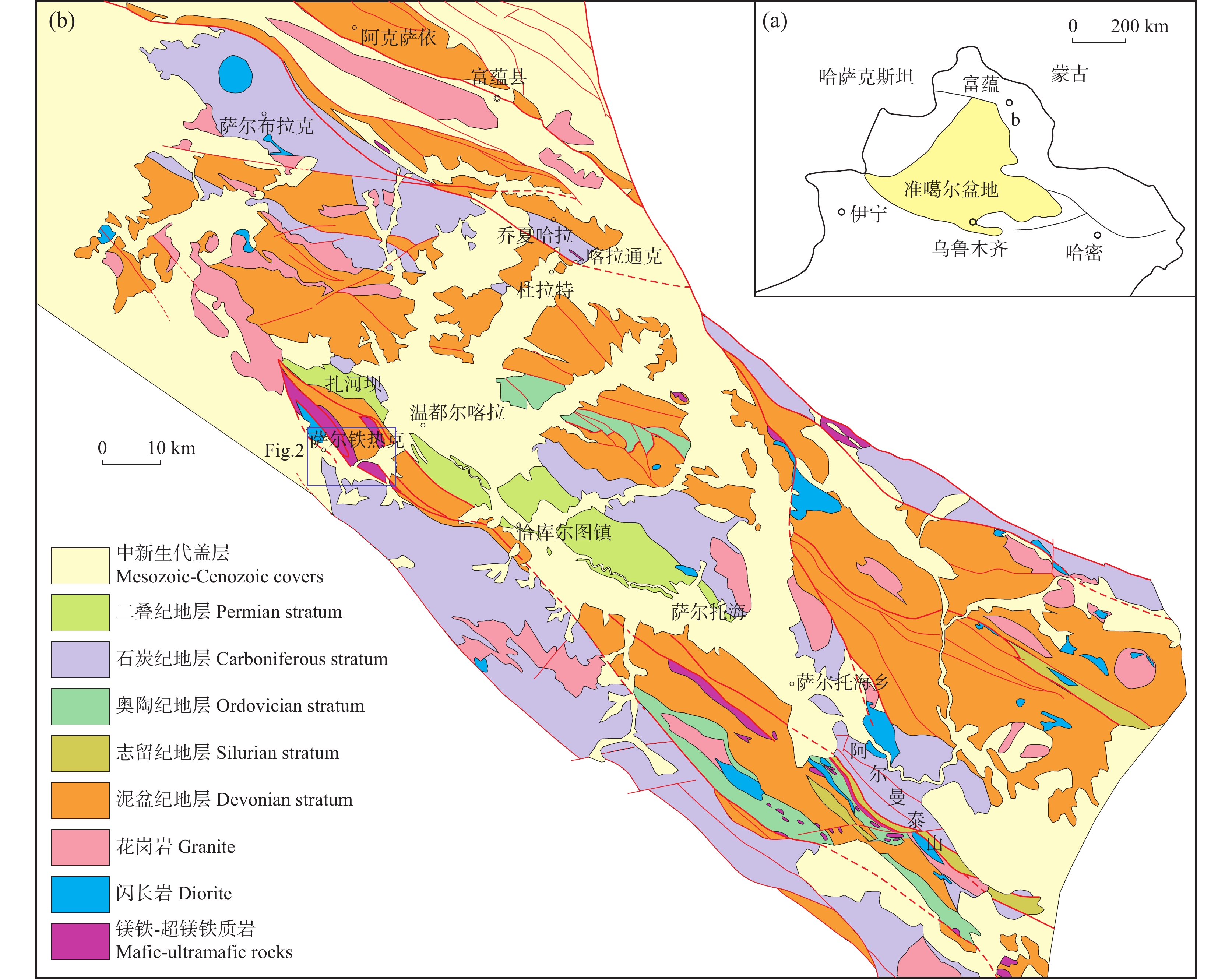
 下载:
下载:
